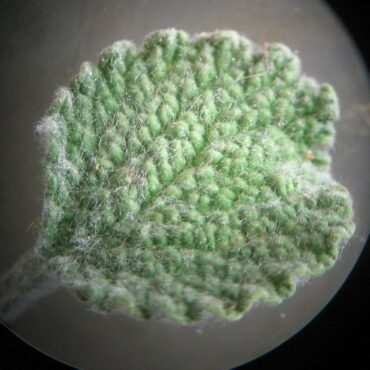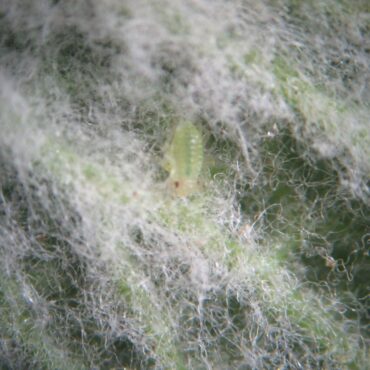White horehound is an invasive, perennial plant found world wide. It is a member of the mint family and looks like a typical mint, with square stems, opposite leaves and clusters of small white flowers in discrete whirls – like knots on a rope. Like most mints, it produces a mixture of essential oils. Unlike most mints, the oils of horehound are not strongly scented. However, the essential oils of horehound are very bitter, and they have been used in a wide variety of medicinal applications.
White Horehound (not native)
Marrubium vulgare
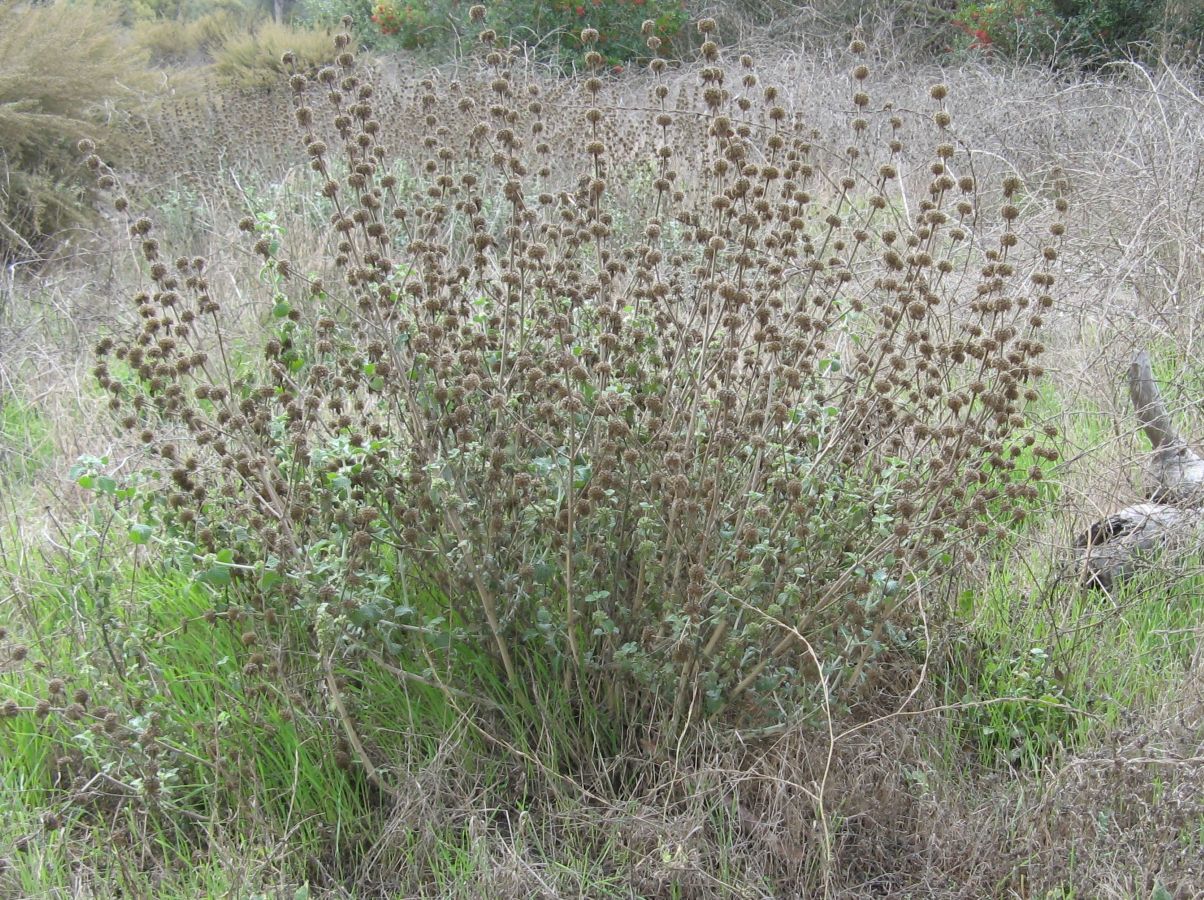
Other Common Names:
Description 4,11,23,59,340
White horehound is a perennial subshrub, usually 1-2 feet (30 – 60 cm) tall. A member of the mint family, horehound has many of the mint family characteristics: square stems, paired leaves, bilateral flowers in dense whirls along the stem. Stems and foliage of horehound may be covered with long, white woolly hairs that give the plant a characteristic bright, silver-green color. In addition to the long white hairs, small glandular hairs are present, hard to find beneath the more prominent wool. These smaller hairs secrete a bitter -tasting substance, which, unlike secretions of most mints, lacks a pungent odor.
Leaves of horehound are rounded, 0.5-1.5 inches (1.2-6 cm) long, with a short petiole; margins are coarsely toothed (crenate); leaf veins are strong raised on the lower surface and deeply sunken on the upper, giving the surface an unusual cobblestone texture. Leaves may be lost under summer drought stress
Flowers occur in distinct, dense whirls – like beads – along the stem, each whirl consists of up to 75 flowers and is subtended by two leaf-like bracts. A flower is generally less than ¼ inch (0.5 cm) long. The small calyx is ten-lobed, each lobe ending with a sharp, recurved hook. The white flower is bilateral, with five petals joined into two lips. Two upper petals are united at the base and form the upper lip, which is elongated and erect (like rabbit ears). Three petals form the lower lip which has one large central lobe, that may be further lobed, and two smaller lateral lobes. There are four stamens fused to the top of the corolla tube, and one superior four-lobed ovary with a white stigma with two unequal branches. Flowers occur mainly in spring and summer, but under good conditions may occur any time.
As the fruit matures, the calyx becomes hard, and the recurved hooks, become sharp spines, forming a bur enclosing 1-4 tiny 3-sided seeds (nutlets) about 1/8 inch long.


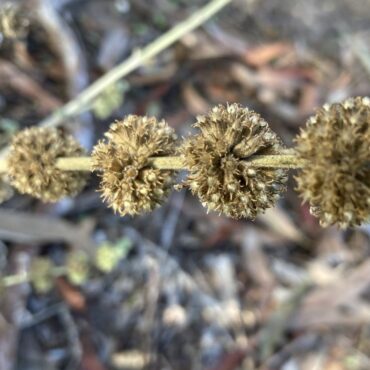
Distribution
White horehound is thought to have originated in the region between the Mediterranean Sea and Central Asia. It has since spread around the world and is generally considered an invasive and noxious pest.41
It is likely that Franciscan friars brought horehound to California as a medicinal herb in the late 18th century.571 Today It is found throughout California, mostly in disturbed areas below 2000 feet.7,89
In the Reserve, white horehound grows around the sugar gums at the old homestead site at Santa Carina, presumably planted by the early settlers for colds and coughs. It is one of our few plants that will grow in the deep eucalyptus litter there, and it persists in spite of efforts of our restoration teams to weed it out.
Learn more about plant vegetation types here
Classification 2,44,59,143
White horehound is a dicot angiosperm in the mint family (Lamiaceae). Like most mints, stems are square in cross-section, and leaves are arranged in pairs along the stem. Flowers are arranged in whirls; they are strongly bilateral, with petals fused into two lips. Members of this family often contain essential oils that give a strong scent, which may vary from pleasantly minty, to pungent and objectionable. White horehound is an exception to this. Although it produces a diversity of secondary metabolites, which taste bitter to us, these are not strongly scented.
Many of our important culinary herbs belong to this family, including oregano, thyme, rosemary, basil, mint and lavender. There are no poisonous plants in the mint family.34
Five members of the mint family grow in the Reserve. In addition to horehound, there are Black sage (Salvia mellifera), White sage (Salvia apiana), Cleveland sage (Salvia clevelandii) and rigid hedge-nettle (Stachys ajugoides var. rigida)
Jepson eFlora Taxon Page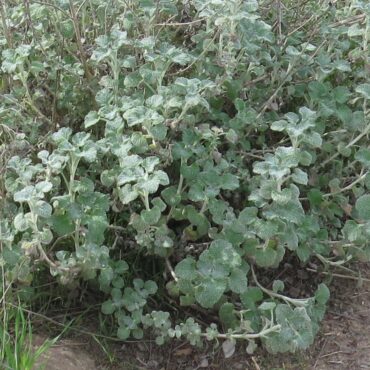
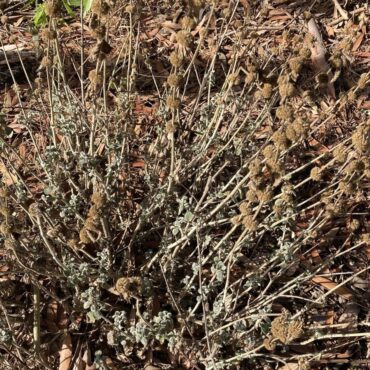

Ecology
The general, but unproven, consensus is that plant spines first evolved to protect plants against herbivores.268 Since that time, the morphology of spines has diversified greatly. Present day spines appear to provide a variety of benefits, from defensive, to climbing. Some of these benefits are supported by experimental work, most by logic and some only by imagination.
Some plants, such as chollas (Cylindropuntia spp.) and cockleburs (Xanthium straminarium) appear to use their spines to disperse seeds, grabbing and clinging to passing animals and spreading the seeds far from the parent plant. White horehound appears to fall into this category.572 The sharp little spines around the matured calyx (burr) are tough enough to catch a ride on boot soles and truck tires as well as sheep wool, rabbit fur and kangaroo pelts. Was this the original evolutionary stimulus for horehound spines, or did they (do they) originally (presently) serve primarily as protection from herbivores?
We really don’t know.


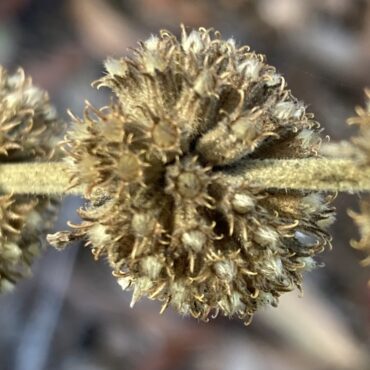
Human Uses
The earliest known medicinal use of white horehound may have been in 100 BC Egypt, where pharaohs regularly included it in their medicine chests.570 One hundred years later in Rome, Pliney the Elder called the plant “ a plant of the very greatest utility”. 568 Throughout the ages, the applications of horehound diversified. It has been used for diverse uses as a cure for fevers, an antidote for poisons, a replacement for hops in beer, a stimulant for digestion and a protection from magic spells.567,569 Then, as now, the most common use concerns the relief from coughs and colds. Even though few if any medicinal benefits have been supported – or refuted – by clinical trials, horehound is included as an ingredient in several modern over-the-counter medicinal products.570

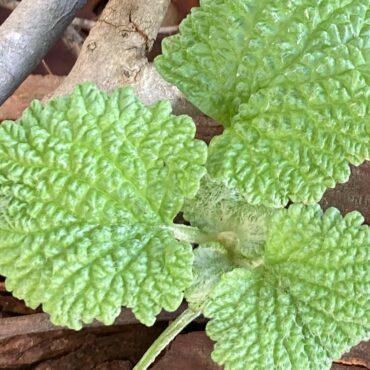
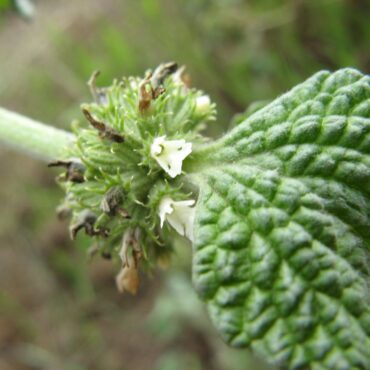
Interesting Facts
Some think the name “horehound” originated with the early Egyptians, who called the plant Seed of Horus, after Horus, a significant Egyptian god, who is often depicted as a falcon-headed man.41
A more prosaic explanation is that “horehound” came from two old English words: “hore”, meaning white or light colored, and “hune”, a kind of plant.41,567

